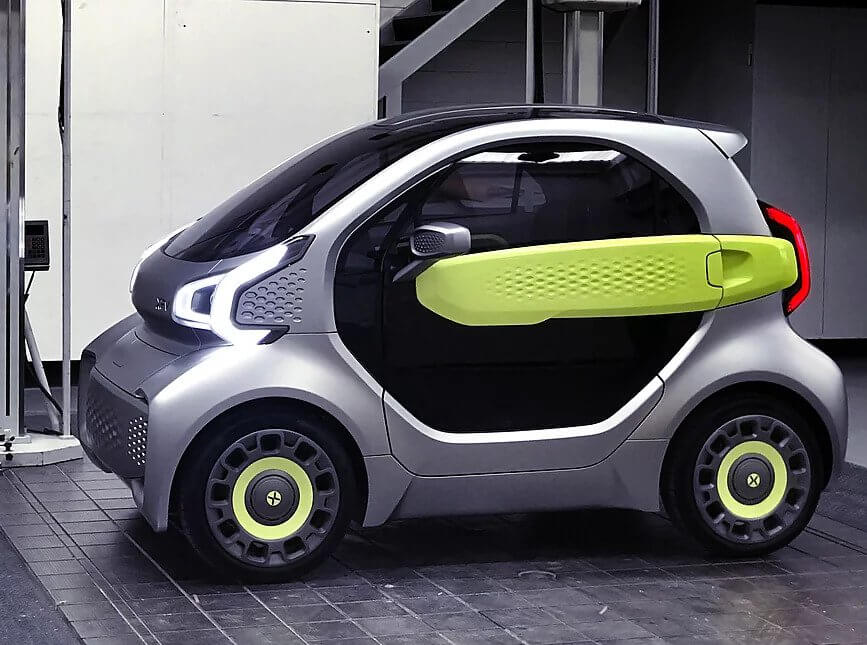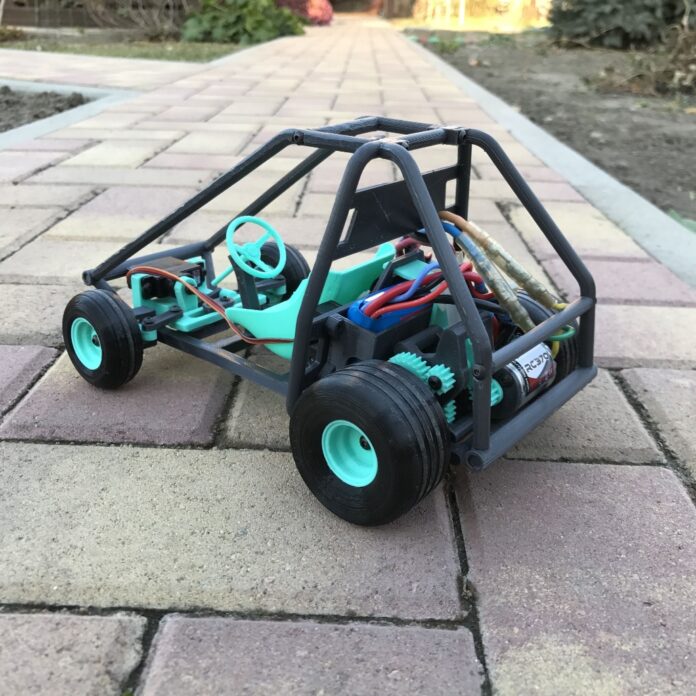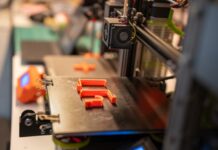Introduction:
3D Printing is emerging as one of the most advanced technologies that will redefine the electric vehicle industry by creating unique customer experiences. OEMs are experiencing a major shift because of the growing demand for the reduction of carbon emissions. The top manufacturers in the automotive industry are adopting 3D printing technology to build high-quality auto parts and accessories and gain a competitive edge in the market.
How is 3D Printing Enhancing the EV Production Process?
The image is used for illustration purposes. We are not the owner or creator of the image.
Electric cars and automated cars are not a fantasy of the future anymore. They have made their way into our sophisticated lifestyle slowly but definitely. And if you ask, we can point to the cloud-to-car mapping systems and driver and passenger behavior monitoring systems as the most charming features of these electric vehicles. The flourishing economic environment has impacted the customer journey like never before, bringing more and more consumer demands. The automotive manufacturers are looking for new avenues and materials that can be added to EV manufacturing to meet the needs of the consumers. 3D Printing is one of them that is helping the EV in many ways:
o Design Communication:
Showcasing the form of a vehicle is the first step of the designing process in the automotive industry. Manufacturers use SLA and material jetting to produce high-detail, sleek, scale models of automotive designs. A perfect model helps communicate the design intention and showcase the concept’s overall form.
o Validation:
AM prototyping has now become a common practice in the automotive sector. And the interesting fact is that currently, AM technology is available for any prototyping need, such as printing a full-size wing mirror with great detail or a fully colored dashboard. AM engineering materials are available for complete testing and validation of prototype performance.
o Pre-Production:
Additive manufacturing is disrupting the production process of low-cost rapid tooling for thermoforming, injection molding, and jig and fixtures. This helps faster tooling manufacturing at a low cost and produces low to medium parts runs. This validation decreases the chances of investing in expensive tooling in the production stage.
o Production:
Additive manufacturing is predominant in making the prototyping solution to meet the massive and ever-increasing production volumes in the automotive sector. Enhancements in the size of industrial printers, the speed, and the outstanding quality of materials have made additive manufacturing a go-to option for medium-sized production runs.
o Customization:
Additive manufacturing is also bringing a significant impact on the automotive industry by providing the opportunity for customization. With the help of 3D printing technology, any part of the vehicle can be custom-made for augmented vehicle performance.
3d Printing in Electric Vehicle Manufacturing- A Brief Overview

The image is used for illustration purposes. We are not the owner or creator of the image.
The application of 3D printing technology was limited in electric vehicle manufacturing until a few years ago. Creating functional prototypes was the main application of AM in the automotive industry then. However, with the evolving nature of time and technology, 3D printing technology became able to bring more than just prototyping to the floor. 3D Printing is used to optimize structural design, design complex parts of the vehicle, and build end-user part applications. Here are some of the applications of 3D Printing in the electric vehicle manufacturing industry.
- 3D Printing Fast-tracks Product Design Phase
Prototyping is potentially the first step of any traditional process of vehicle manufacturing. The negative side of this prototyping method is that it is time-consuming and expensive. However, additive manufacturing has changed the scenario of the product development process in its entirety. OEMs are now capable of devising a high-fidelity and representative prototype of a physical part of the car within just a few days. Auto manufacturers can now print highly detailed, accurate, and smooth full-scale parts of electric vehicles, which helps introduce new concepts and designs, validation, and performance testing stages of the process.
- Development of Intricate and High-Performance Parts
3d printers enable the manufacturers to produce low-volume and customized production parts on demand while reducing costs and time. The application of additive manufacturing has proved beneficial for OEMs as they can manufacture highly advanced and intricate parts without investing in production tooling. Even the small companies that offer a customized experience to their consumers are also gaining leverage of 3D Printing to instill their creativity and designing skills in the car parts.
- Producing Manufacturing Aids
3D Printing helps create optimized and efficient products, reduce costs and time, and enhance workers’ safety. The 3D printing process enables the manufacturers to use ergonomic tools, which helps prevent strain during the assembly process.
- Increased Material Options with Improved Thermal Capabilities
With the constant evolution of additive manufacturing, custom materials with specific mechanical properties have changed the playground for automotive manufacturers. The automotive manufacturers can now use polymer instead of metal, which has further reduced the weight of electric cars without compromising strength, quality, and safety.
- A solution to the Problem of Spare Parts
Another profitable application of 3D Printing in the automotive industry is producing spare car parts. 3D Printing helps automotive manufacturers design all aspects of a car that can be stored as a digital copy. Moreover, a spare part can be produced in-store with the help of 3D printing technology and thus solving customers’ requests. Apart from this, 3D Printing is also beneficial for the manufacturers in improving the supply chain by implementing a digital thread, thus mitigating the warehouse and inventory costs.
3D Printing in the Automotive industry in Los Angeles and Texas
The US’s electric vehicle industry is booming, especially in Los Angeles and Texas. North California has achieved its fair share of attention, being the hub for Tesla, the American multinational automotive brand. However, it does not leave behind Los Angeles and the remaining part of southern California. Los Angeles is also becoming a hub of EV innovation and manufacturing. Los Angeles is expanding its vehicle manufacturing, charging system, and battery manufacturing capacity. There are a wide range of 3d printing service providers in Los Angeles and Texas who has advanced technologies and manufacturing solutions.
The electric vehicle industry in Los Angeles is thriving on its unparalleled local support. This way, the community contributes to California’s goal of reaching 5 million electric vehicles on the roads by 2030. The industry is adopting 3D printing technology to enhance the experience of electric cars for its consumers. According to a PwC survey, 56% of all US manufacturers stated that half will adopt 3D Printing in the upcoming 3-5 years.
Wrapping it up…
3D Printing is the only digital manufacturing process now that is transforming the electric vehicle industry with its umpteen potential. To put it more precisely, now is the high time for OEMs to adopt 3D printing technology to advance the journey of electric vehicles. Because while the journey is full of challenges and the technology is full of potential, the process becomes more accessible to assimilate than ever.
















